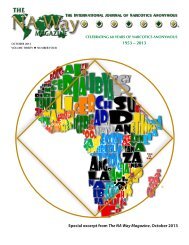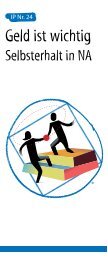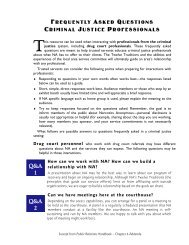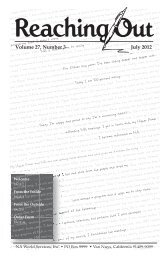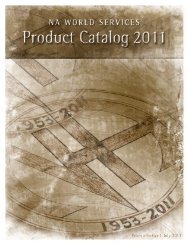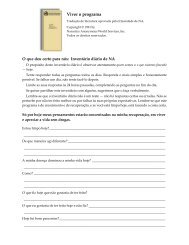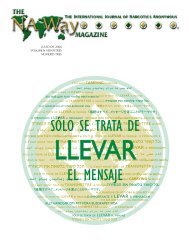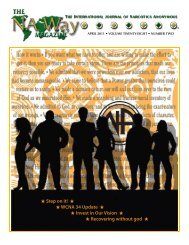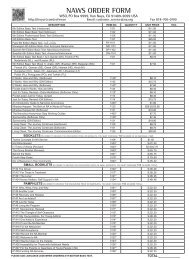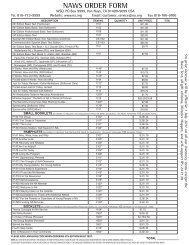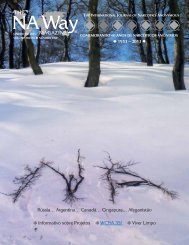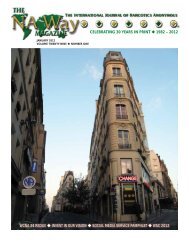Public Relations Handbook - Narcotics Anonymous
Public Relations Handbook - Narcotics Anonymous
Public Relations Handbook - Narcotics Anonymous
Create successful ePaper yourself
Turn your PDF publications into a flip-book with our unique Google optimized e-Paper software.
Suggest that courts purchase NA pamphlets and other NA literature to give totheir clients. Invite drug-court personnel to attend open NA meetings.Desire is not a measurable commodity. It lives in the heart of eachindividual member. Because we can’t judge the sole requirement formembership, we are encouraged to open wide the doors of our meetingsto any addict who wishes to join. We are asked to extend to others thecare and concern that helped each of us find a sense of belonging. TheThird Tradition helps NA grow by encouraging us to welcome others.It Works: How and WhyMeeting attendance cards and NA groupsThere are several reasons why members seem to get uncomfortable about courtorderedattendees at NA meetings. One reason is that <strong>Narcotics</strong> <strong>Anonymous</strong>, as afellowship, does not participate in the surveillance of its members; another is thatthe idea of forced attendance seems to go against some of our core philosophies.Many members, however, have found NA through parole and other forcedattendanceprograms, including treatment facilities. It is not up to us to decide ifsomeone is ready to get clean or if they are a member of NA. Many addicts who didnot initially want to attend NA meetings ended up staying in NA as a result of forcedattendance.There is also the very practical reality that drug-court referrals can affect a group’satmosphere of recovery and can drain a group’s financial resources. It may be helpful toremember that our literature says that we don’t care where an addict comes from.Groups can ask themselves if eliminating the attendance of those referred by drug courtsis really the best solution. The following ideas can help groups discuss solutions to the realchallenges they face with drug-court referrals: The group may want to take an inventory. This inventory could focus on howready and able the group is for drug-court referrals. Although increasedattendance can overwhelm the atmosphere of recovery, a group may want toconsider its attitude toward those who are court referred. Is the group openand welcoming? Some court-mandated clients may not be addicts or may not beready to admit that they are addicts. The group can ask themselves if they arepracticing NA’s Third Tradition. A group can look to see if the format of the meeting is suitable for a large influx ofnew members. A group that has a participation format may decide to structurethe meeting format in a way that better serves newcomers, such as a newcomerworkshop, speaker meeting, or question-and-answer format. Even after all theseconsiderations, a group may decide that the meeting cannot accommodate thosewith meeting-attendance cards. The group would then communicate this to theASC or the committee in contact with court personnel. NA groups that decidenot to sign court-attendance cards can be listed in the area meeting directory sothey aren’t mistakenly attended by court-referred clients.Tradition Three: The only requirement for membership is a desireto stop using. All addicted persons are welcome and equal inobtaining the relief they seek from addiction; every addict canrecover in this program on an equal basis.October 2006 | PR <strong>Handbook</strong> | 59



